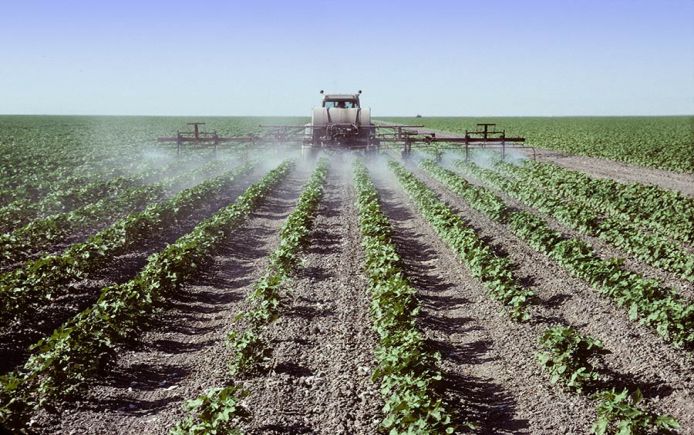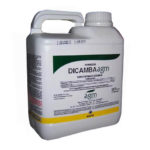How Big Corporations Are Poisoning the Nation's Farms | DCReport.org
- Get link
- X
- Other Apps
How Big Corporations Are Poisoning the Nation's Farms | DCReport.org


Environment, Featured Story, The Latest News


How Big Corporations Are Poisoning The Nation’s Farms
It’s About Ignoring Nature and Lobbying in the Trump Administration
By Sarah Okeson

Sarah Okeson
How did farmers who had shunned deadly dicamba for decades end up buying it even as the herbicide poisoned their neighbors’ farms?
The answer is money.
Bayer AG and BASF, makers of dicamba, have spent more than $40 million in federal lobbying since 2017 says the Center for Responsive Politics. Bayer, which bought Monsanto, spent about $35.2 million.
Trump’s EPA kept newer dicamba sprays, approved under Obama in 2016, on the market. The herbicide damages plants that aren’t genetically altered to resist it at concentrations in the air as low as 1 billionth of a gram per cubic meter. The dicamba products’ EPA approval is set to expire Dec. 20 unless the agency extends it again.
The makers of dicamba have spent more than $40 million in federal lobbying since Trump took office.
At least some weeds had the potential to resist herbicides before herbicides were even invented. A mutant weed collected in 1888 near Bordeaux, France, had the same kind of mutation that causes herbicide resistance in blackgrass today. Sinox, the first major organic chemical herbicide, was developed in France in 1896.
Action Box/What You Can Do About It

Tell EPA Administrator Andrew Wheeler your thoughts on herbicides. Call Wheeler at 202-564-4700 or write to him at EPA Headquarters / William Jefferson Clinton Building / 1200 Pennsylvania Ave., NW / Mail Code: 1101A / Washington, D.C. 20460.
Contact the Pesticide Action Network at 510-788-9020.
Some herbicides developed during the 1940s such as 2,4,5-T, a major ingredient in Agent Orange, were later banned because of their toxicity. Herbicides traditionally were sprayed early in the season before crops emerged so that they would kill weeds, not crops like corn and soybeans.
Evolving Resistance
That all changed in 1996 with the first crop of soybeans genetically altered to resist glyphosate, the active ingredient in Monsanto’s Roundup herbicide. Farmers used Roundup early and often. Weeds evolved to survive.
Glyphosate became the most used weed-killer in the world. In our country, usage increased from about 30 million pounds in 1996 to 287 million in 2016, according to the U.S. Geological Survey.
In 2005, a type of pigweed, Palmer amaranth, was found on a farm in Macon County in Georgia that was resistant to glyphosate. A single pigweed plant can produce 500,000 seedlings. The weed climbs high above row crops, blocking out the sun. Pigweed can reduce a farmer’s yields by 79%.
Kansas State University researchers cited the work of Nobel Prize winner Barbara McClintock in a 2018 study about herbicide resistance. McClintock, who died in 1992, spent much of her life studying Indian corn. She showed genes can change when they are stressed.
Weeds Fight Herbicides
The Kansas State researchers found genetic material outside weed chromosomes that helped weeds fight off herbicides.
Weeds can spread resistance to herbicides through pollination. By 2017, about 120 million acres of farmland in the United States had glyphosate-resistant weeds.The pesticide industry has looked at herbicide resistance to try to come up with new products. That led to the new dicamba sprays. The enzyme that makes plants resistant to dicamba was purified from bacteria found in soil and water samples from stormwater retention ponds at a dicamba manufacturing plant in Beaumont, Texas.
Researchers at the University of Nebraska developed the dicamba resistance trait. In 2005, Monsanto acquired the rights to it.
Spray Drifts
Steve Smith of Red Gold, the world’s largest privately held tomato canner, warned Congress in 2010 that widespread use of dicamba is “incompatible with Midwestern agriculture.” When the EPA under Obama approved new dicamba sprays in 2016 there was no independent testing of how prone the herbicide was to drift and damage other fields.
In February, a jury in Southeast Missouri awarded an owner of a peach farm $250 million in punitive damages from the makers of dicamba, Monsanto and BASF. The companies were ordered to pay $15 million in compensation to the peach farm which is expected to go out of business.
Dicamba use soared from 2011 when it was applied to just 0.6% of U.S. soybean acres to about 60% in 2019. Weeds are evolving too to become dicamba-resistant.
- Get link
- X
- Other Apps
Comments
Post a Comment